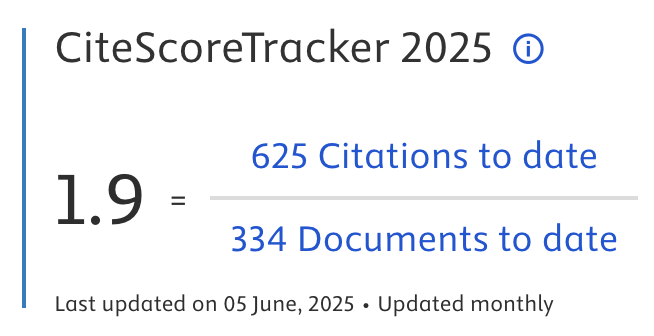Logistic Regression Analysis of Factors that Influence User Experience in Student Medical Report Applications
Abstract
Monitoring student health efficiently requires collaboration between schools and government health services. Traditional methods often need more agility and user-friendliness, leading to delays and inaccuracies. This research aims to verify a fast and agile student medical report that we have previously developed using the Modified Agile User Experience (UX) method, with a focus on simplicity, usability, and accessibility. The system’s evaluation employs non-functional testing methods to identify factors influencing user satisfaction within the scope of the user experience. We measure task-level and overall user satisfaction using the Single Ease Questions (SEQ) questionnaire as the response variable. This study also investigates test-level satisfaction as predictor variables using Usability Metric for User Experience (UMUX) and UMUX-Lite questionnaire as predictor variables, as well as each student’s Interest in learning and learning motivation concerning test-level satisfaction. Binary Logistic Regression (BLR) analysis determined the relationship between test-level and task-level satisfaction, revealing significant correlations between these variables. Based on the results, the Interest to Learn variable is the most important factor that influences task-level satisfaction, but with a small probability value (42.9%). To ensure these accurate results, we changed the scale on SEQ from Easy and Hard to seven scales with normalized values. We compared the results using 4 algorithms: Logistic Regression, Random Forest, Support Vector Machine (SVM), and Gradient Boosting as the most effective model. For a test size of 0.2 and a random state of 40, Logistic Regression achieved an accuracy of 0.80 and a Receiver Operating Characteristics (ROC) and Area Under Curve (AUC) score of 0.83. Random Forest also had an accuracy of 0.80 but a slightly lower ROC AUC score of 0.77. SVM also performed well, with accuracies of 0.83 and ROC AUC scores of 0.77. Gradient Boosting showed the lowest performance with an accuracy of 0.77 and a ROC AUC score of 0.73. These results indicate that Logistic Regression is the most robust model for predicting user satisfaction. Significant data correlations between SEQ, UMUX, and UMUX-Lite guide the development of user-centered applications, enhancing the effectiveness of educational tools by ensuring higher user satisfaction. Future research should consider more extensive, more diverse samples and additional factors influencing user experience to refine these models and their applications.
Article Metrics
Abstract: 274 Viewers PDF: 192 ViewersKeywords
Full Text:
PDFRefbacks
- There are currently no refbacks.

Journal of Applied Data Sciences
| ISSN | : | 2723-6471 (Online) |
| Collaborated with | : | Computer Science and Systems Information Technology, King Abdulaziz University, Kingdom of Saudi Arabia. |
| Publisher | : | Bright Publisher |
| Website | : | http://bright-journal.org/JADS |
| : | taqwa@amikompurwokerto.ac.id (principal contact) | |
| support@bright-journal.org (technical issues) |
 This work is licensed under a Creative Commons Attribution-ShareAlike 4.0
This work is licensed under a Creative Commons Attribution-ShareAlike 4.0





.png)